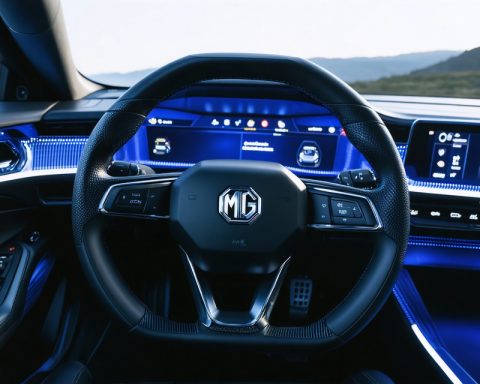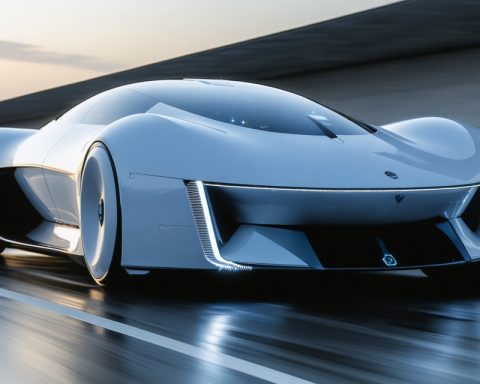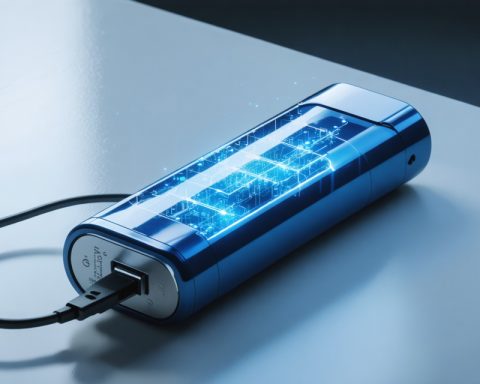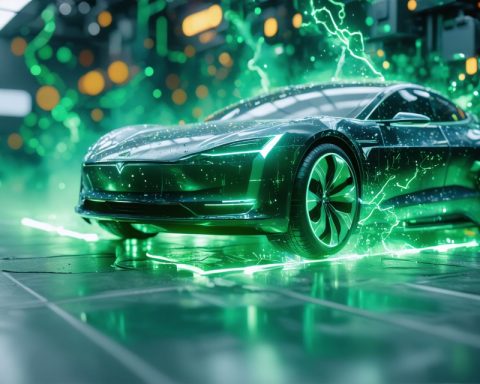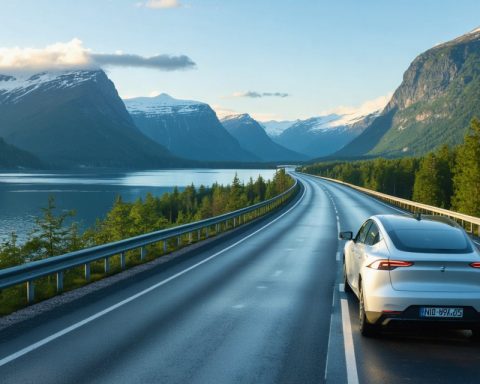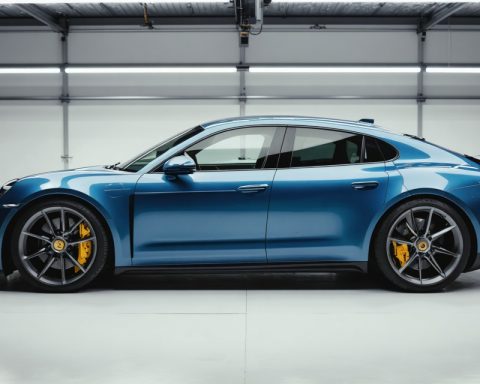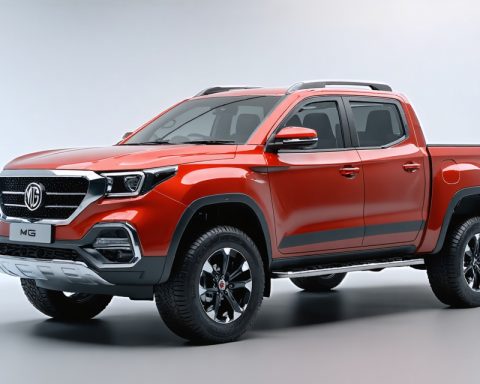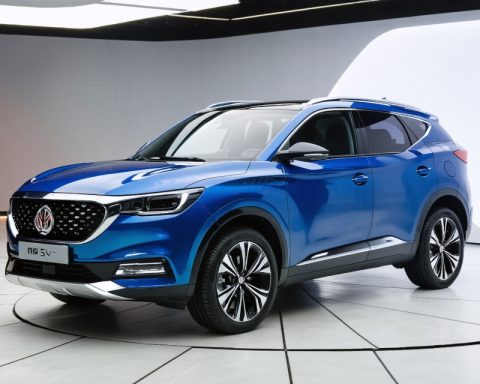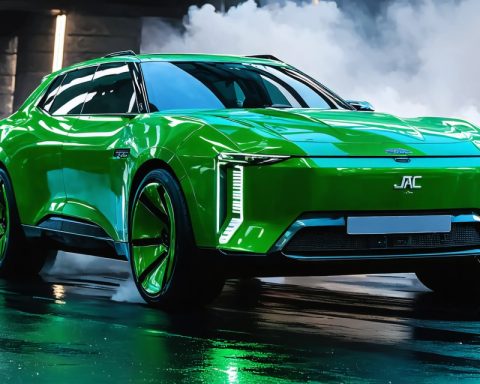- BYD has become a leading force in the electric vehicle (EV) industry, evolving from a rechargeable battery company to one of the largest electric car manufacturers worldwide.
- The company focuses on combining sleek design with environmental awareness, offering cars that are both high-performing and eco-friendly.
- BYD’s flagship model, the Han sedan, provides an advanced driving experience, emphasizing technology and style.
- Beyond cars, BYD is expanding into public transportation with electric buses, trains, and monorails, promoting large-scale sustainability.
- BYD is investing in charging infrastructure to facilitate wider EV adoption by reducing charging times.
- Through innovation, BYD aims to significantly reduce reliance on fossil fuels, aligning with global sustainability goals.
- The overarching message is that driving can be eco-positive, with every BYD vehicle representing progress toward a greener planet.
At the intersection of innovation and sustainability stands BYD, an automaker that has quietly become a dominant force in the electric vehicle (EV) revolution. From bustling city streets to serene countryside roads, BYD’s electric cars are redefining what it means to drive with a purpose.
Founded in 1995, BYD (Build Your Dreams) emerged from its humble beginnings as a rechargeable battery company. Today, it commands attention as one of the world’s largest electric car manufacturers. Imagine walking through a gallery of cutting-edge technology; each BYD model is an artwork in its own right, showcasing the perfect harmony between sleek design and environmental consciousness.
BYD isn’t just making waves; it’s creating a tsunami of change in the automotive industry. The company’s vision is as clear as sunlight streaming through a windshield. To phase out fossil fuel dependency, BYD crafts vehicles that are not only environmentally friendly but also optimized for performance and safety. With powerful electric motors and advanced battery technology, these cars offer drivers an exhilarating experience without the carbon footprint.
Picture the sensation of gliding silently through traffic in a BYD Han, the brand’s flagship sedan. It boasts an aerodynamic silhouette and a meticulously designed interior, offering a driving experience akin to a whisper in the wind. As you grip the wheel, the intuitive interfaces make each journey seamless, turning heads with both technology and style.
But BYD’s ambitions stretch far beyond individual car sales. With visionary dedication, the firm is tackling public transportation. Electric buses, trains, and even monorails bear the BYD stamp, carving a path toward a greener planet. The company already has fleets operating in major cities worldwide, showcasing their ability to merge scalability with sustainability.
Consumers needn’t sacrifice convenience for conscience. Charging infrastructure expansion is a critical factor in BYD’s strategy, ensuring that the future of driving is not burdened by lengthy stops. The development of robust, fast-charging stations transforms electric vehicles from niche to norm, encouraging more drivers to make the switch.
In every EV they produce, BYD embeds a simple yet profound message: driving need not come at the expense of the environment. As climate change challenges continue to escalate, BYD exemplifies what it means to take charge—literally and figuratively. Embrace this snapshot of the future—a testament to progress where every mile driven is a step closer to a sustainable planet.
In contemplating BYD’s rapid ascent, the takeaway is clear: the road to sustainability is paved with innovation, and BYD is determined to lead the charge. As we journey forward, perhaps the most electric question we should ask is not “What can BYD do?” but rather, “What can we do to match their pace?”
BYD: Driving the Future of Electric Mobility
Expanding Beyond the Source: A Deep Dive into BYD’s Electric Revolution
How BYD Stands Out in the EV Industry
BYD’s rise from a humble battery manufacturer to a leading electric vehicle (EV) powerhouse is a remarkable story of innovation and sustainability. Founded in 1995, BYD has become one of the largest EV manufacturers globally, with a wide range of products including cars, buses, and rail transit solutions. Their commitment to reducing fossil fuel dependence and enhancing sustainable living through technological innovation is what sets them apart.
BYD’s Revolutionary Products and Innovations
1. Electric Cars:
BYD’s lineup, including the sleek BYD Han sedan, offers consumers a unique blend of style and sustainability. These vehicles feature advanced battery technology that prioritizes performance and safety without compromising on environmental friendliness.
2. Public Transport Solutions:
With electric buses and monorails operating in cities worldwide, BYD is a leader in sustainable public transportation. Their commitment to creating scalable, environmentally-friendly mass transit options highlights their holistic approach to reducing urban carbon footprints.
3. Battery Innovations:
BYD’s prowess in battery technology cannot be overstated. The company’s Blade Battery technology emphasizes safety and longevity, offering greater durability and reduced risk of thermal runaway compared to traditional lithium-ion batteries.
Global Impact and Expansion Strategies
Market Presence:
BYD’s vehicles are not limited to China; they are gaining traction in Europe, North America, and other parts of Asia. By combining local manufacturing with global partnerships, BYD enhances its market outreach while adapting to regional requirements.
Infrastructure Development:
The company’s investment in charging infrastructure is crucial for the mass adoption of EVs. Their focus on building fast-charging stations aligns with plans to ease the transition for consumers moving away from fossil fuel vehicles.
Controversies and Limitations
1. Competitive Market Pressure:
As global automotive giants invest heavily in EV technology, BYD faces stiff competition. Companies like Tesla and Volkswagen are continuously pushing technological boundaries, necessitating constant innovation from BYD.
2. Environmental Concerns over Battery Production:
Despite their focus on sustainability, battery production has inherent environmental costs. BYD must address these through improved recycling programs and cleaner production methodologies.
Industry Trends and Predictions
1. Growing EV Adoption:
With increasing environmental regulations and consumer awareness, the demand for EVs is expected to rise significantly. BYD is poised to capture a significant portion of this growing market.
2. Autonomous Driving:
Future development will likely see BYD and other automakers incorporating advanced autonomous driving technologies, emphasizing safety and convenience.
Practical Tips for Potential EV Buyers
– Evaluate your driving needs: Consider whether an electric vehicle like those offered by BYD suits your daily travel needs and access to charging infrastructure.
– Research subsidies and incentives: Governments worldwide offer incentives for EV purchases; explore how these can reduce the cost of owning a BYD vehicle.
– Stay informed on new models and battery tech: Keep an eye out for the latest BYD models and innovations in battery technology to ensure you’re investing in the most advanced technology available.
Conclusion: BYD’s Relationship with Sustainability and Innovation
BYD exemplifies the potential for corporations to lead with purpose. Their commitment to environmentally sound products, infrastructure development, and public transportation solutions makes them a frontrunner in the ongoing shift to electrified transportation.
As consumers, staying informed and making conscientious choices complements the mission led by BYD. Embrace the electric revolution, knowing every mile powered by electricity is a step toward a cleaner planet.
Explore BYD further: BYD Official Website

